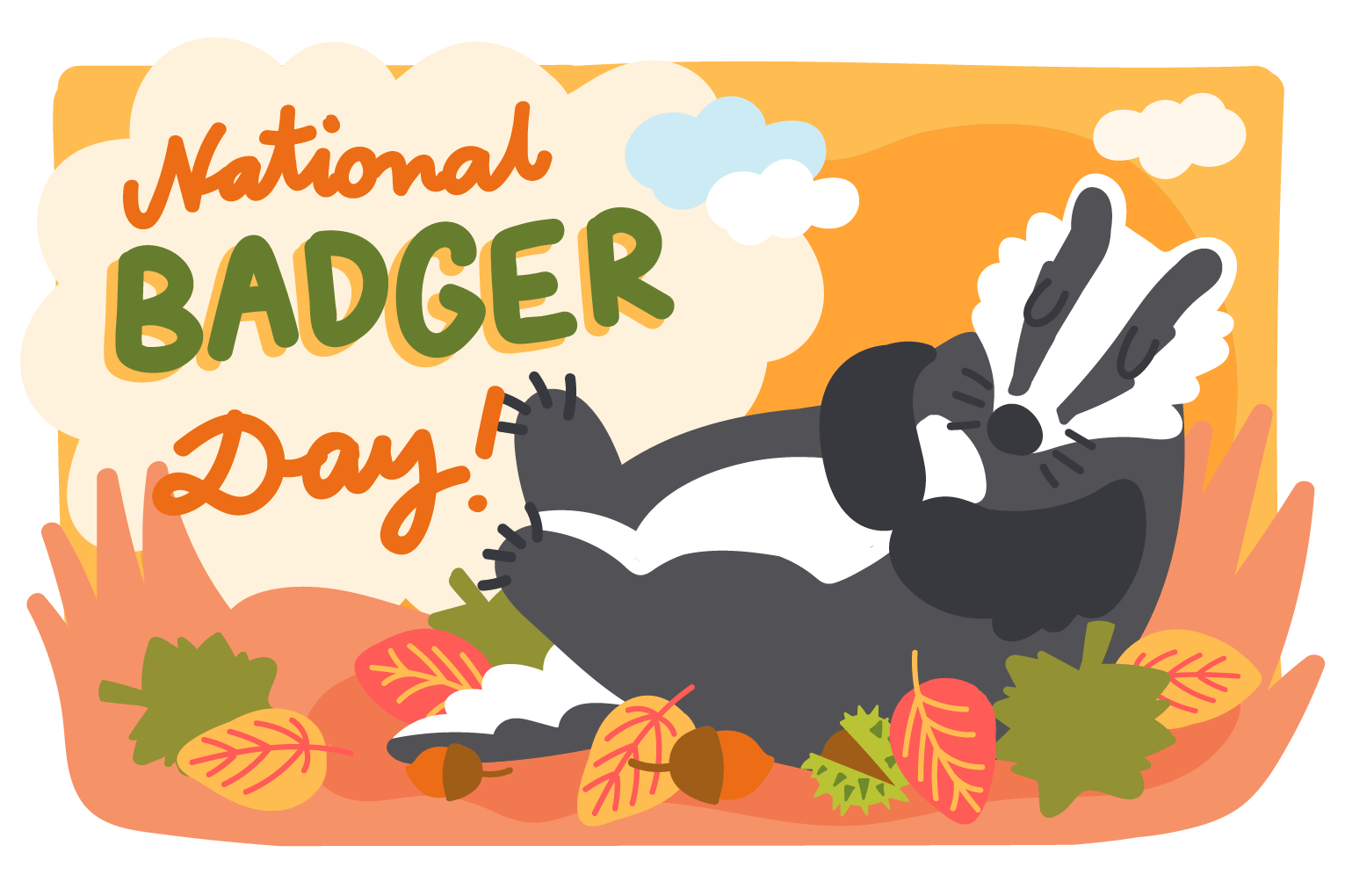National Badger Day: 5 Badger Lessons

Today is National Badger Day and we are celebrating all things AMAZING about this iconic native British wildlife species. Badgers are fascinating animals, members of the same family that includes weasels, ferrets, martens, otters, skunks, fishers and wolverines. Reading more about badgers got us thinking – what can we learn from them? Here are our top five badger lessons!
Badgers sleep… a lot!
Badgers are nocturnal creatures meaning they sleep during the day and are more active at night. Wouldn’t it be great to be able to sleep for hours during the day? Sometimes we could all do with a good nap! Also, badgers don’t usually hibernate, but sometimes they will sleep for a few days or weeks in their dens during the coldest part of winter! Cosy!
Badgers have HUGE homes underground and are very house proud
Just like humans, badgers live in homes with their families and love spending time with relatives. Their homes – called ‘setts’ – can be centuries old and are used by many generations of badgers. One sett can be up to a MASSIVE 100 meters or more long! Badgers have strong limbs and sharp claws that help them dig their shelters and find food underground. They make their homes by digging tunnels and caves and use grass and leaves for bedding. Setts even have a special chamber reserved as the bathroom because badgers are clean creatures, according to the Somerset Wildlife Trust!
Badgers have a simple but varied diet
Most badgers are omnivores, which means they eat both plants and meat. Typically, though, they mainly consume earthworms (in a single night, one adult badger may eat over 200 worms!), insects, slugs, snails, bird eggs, fruit and when the weather is really cold they may eat hedgehogs too. Let’s not take this advice too literally but it is good to incorporate a variety of foods into our daily diets!
Badgers are VERY sociable (but not when it comes to food!)
In the UK, badgers live in mixed-sex groups of between four and eight animals called a ‘clan’. Sounds lovely! However whilst badgers tend to live in groups, they do not always act cooperatively with their fellow clan-members.. Badgers are unique in this way as individuals in a clan will forage for food on their own, unlike other social groups of animals who might hunt together and reap the benefit as a group. We don’t know whether if we started eating dinner without the rest of the family that would go down too well!
Badgers always have time for fun!
Before going off to forage for food throughout their territory, badgers may spend some time around their sett. Half-grown cubs enjoy playing with each other, chasing, jumping and tumbling – the adults often join them too! They like to groom each other too. Badgers in the same group recognise each other by scent; one badger “musks” another by backing onto it with its tail raised to secrete a strong-smelling liquid from a gland under its tail!
You can enjoy the badger-fest, with new short films about badgers for all ages and special messages from a whole clan of brilliant badger friends here. And look out for ways for you and your clan to get involved too!
Stay FANTASTIC and be like a badger!
Lots of love, Banjo HQ x










